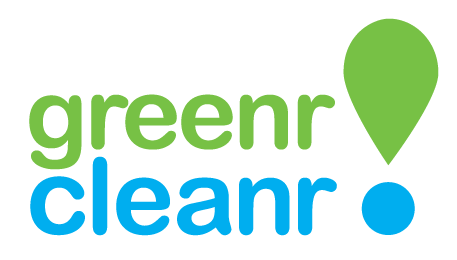Is Your Workplace Green Enough? Green Cleaning Audit and Assessments
In today's environmentally conscious world, sustainability and green practices have become increasingly important, even in the workplace. Creating a green and eco-friendly work environment not only benefits the planet but also promotes a healthier and more productive workplace. In this article, we will explore the concept of green cleaning audit and assessments, and how they can help evaluate and improve the sustainability of your workplace.
Green cleaning audits and assessments play a vital role in evaluating the sustainability of workplace cleaning practices. These assessments aim to identify areas where improvements can be made to reduce the environmental impact of cleaning processes. By conducting regular audits, companies can monitor their progress, set sustainability goals, and implement measures to enhance their green initiatives.
Understanding Green Cleaning Audit and Assessments
A green cleaning audit involves a systematic evaluation of cleaning practices and processes in the workplace. It assesses various aspects of sustainability, such as waste management, energy efficiency, water conservation, indoor air quality, and the use of eco-friendly cleaning products. The audit helps identify areas where improvements can be made to minimize the environmental impact of cleaning activities.
The benefits of conducting green cleaning audits and assessments are multifold. They help organizations identify opportunities to reduce their carbon footprint and conserve resources. Energy-efficient cleaning equipment, reduced water consumption, and the use of eco-friendly cleaning products can also result in lower operational expenses.
Key Components of Green Cleaning Audit
A comprehensive green cleaning audit encompasses several key components that are essential for evaluating the sustainability of cleaning practices in the workplace. These components include:
1. Waste Management
Waste management involves the critical evaluation of waste practices and the promotion of eco-friendly alternatives like recycling, composting, and responsible disposal of electronic waste. By encouraging sustainable methods, we can minimize environmental impact, conserve resources, and foster a cleaner, healthier planet for future generations. Embracing these practices helps create a more sustainable world, where waste is managed responsibly and transformed into valuable resources.
2. Energy Efficiency
Energy efficiency involves assessing energy consumption, enhancing lighting, heating, and cooling systems, and promoting energy-conscious habits among staff. By identifying areas for improvement and implementing sustainable practices, organizations can effectively reduce energy waste and lower their environmental impact. Such measures not only contribute to cost savings but also play a crucial role in combating climate change and creating a greener, more sustainable future.
3. Water Conservation
Water conservation is crucial for sustainable living. By analyzing water consumption patterns and adopting efficient cleaning techniques and fixtures, we can minimize wastage. Identifying opportunities to reduce usage will help preserve this precious resource for future generations, ensuring a greener and more environmentally responsible world. Together, we can make a significant impact on water conservation and protect our planet's water sources.
4. Indoor Air Quality
Indoor Air Quality (IAQ) is crucial for a healthy living space. It involves assessing ventilation systems, reducing pollutants and allergens, and prioritizing non-toxic cleaning products. By doing so, we can create a safe and breathable atmosphere, promoting overall well-being and reducing the risk of respiratory issues. A proactive approach to IAQ maintenance fosters a comfortable and healthier indoor environment for occupants.
5. Eco-Friendly Cleaning Products
Promoting eco-friendly cleaning products entails advocating for non-toxic alternatives that minimize environmental impact. Encouraging sustainable cleaning practices is equally vital. Embracing these measures ensures a greener and healthier future for our planet. Together, let's protect the Earth and safeguard the well-being of generations to come.
Conducting a Green Cleaning Assessment
To conduct a green cleaning assessment at the workplace, meticulously follow step-by-step guidelines. Evaluate cleaning practices, identify eco-friendly alternatives, assess their impact on health and the environment, and implement sustainable solutions for a cleaner and healthier workspace.
1. Review Current Cleaning Practices
First, evaluate the current cleaning procedures, equipment, and products employed. Pinpoint areas requiring enhancement and recognize places where eco-friendly methods are already applied. This evaluation sets the foundation for optimizing cleanliness and sustainability in the future.
2. Establish Sustainability Goals
Establishing sustainability goals is crucial for effective green cleaning initiatives. Ensure these goals are SMART: specific, measurable, achievable, relevant, and time-bound. This clarity will drive focused efforts towards eco-friendly practices, promoting a cleaner environment and a more sustainable future.
3. Engage Employees
To drive greener practices, it is vital to engage employees actively. Encourage their participation in assessments, seeking valuable feedback and ideas. A strong employee engagement approach ensures the long-term success and sustainability of green initiatives within the organization.
4. Implement Changes
After analyzing assessment results and incorporating employee input, devise a sustainable action plan for implementing eco-conscious cleaning methods. This includes adopting environmentally friendly products, optimizing resource consumption, and providing staff with green cleaning training to ensure lasting positive impacts on the environment.
5. Monitor and Evaluate
Regularly monitor and evaluate the progress of your green cleaning initiatives. Conduct follow-up audits to measure the effectiveness of implemented changes and identify areas for further improvement.
Through effective waste management, energy efficiency measures, indoor air quality enhancements, and the adoption of eco-friendly cleaning products and practices, companies can create a greener and healthier work environment. Investing in green initiatives not only demonstrates corporate social responsibility but also leads to cost savings and a positive brand image. By embracing green cleaning practices, organizations can contribute to a more sustainable future while reaping the benefits of a healthier and more productive workplace.
